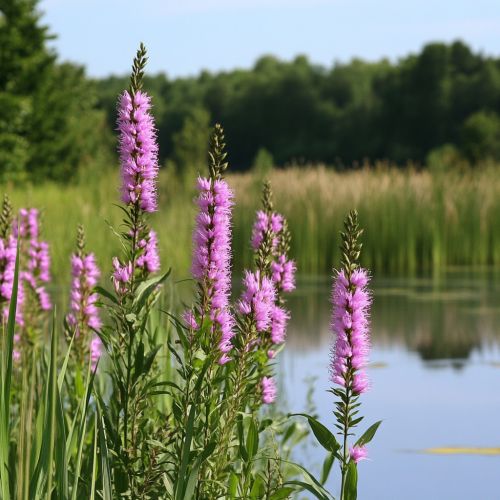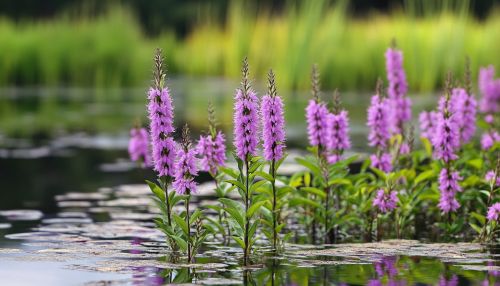Invasive Species in North America
Introduction
Invasive species are organisms that are not native to a specific location and have a tendency to spread, which can cause damage to the environment, human economy, or human health. North America, with its diverse ecosystems ranging from arctic tundra to tropical forests, is particularly vulnerable to the impacts of invasive species. This article delves into the various invasive species found in North America, their impacts, and the measures taken to control their spread.
Definition and Characteristics
Invasive species are typically characterized by their rapid growth, high reproductive rates, and ability to outcompete native species for resources. They often lack natural predators in their new environments, which allows them to proliferate unchecked. These species can be plants, animals, fungi, or microorganisms.
Historical Context
The introduction of invasive species to North America has a long history, often linked to human activities such as trade, travel, and agriculture. Early European settlers brought with them plants and animals that would later become invasive. Over time, globalization has increased the rate at which new species are introduced.
Major Invasive Species in North America
Plants
Kudzu (Pueraria montana)
Kudzu, a vine native to Asia, was introduced to the United States in the late 19th century for erosion control. It has since spread extensively, particularly in the southeastern United States, where it smothers native vegetation and alters ecosystems.
Purple Loosestrife (Lythrum salicaria)
Purple loosestrife, native to Europe and Asia, was introduced to North America in the 1800s. It invades wetlands, displacing native plants and disrupting habitats for wildlife.


Animals
Zebra Mussel (Dreissena polymorpha)
The zebra mussel, native to the Caspian and Black Sea regions, was first detected in the Great Lakes in the late 1980s. It has since spread to various water bodies across North America, clogging water intake pipes, outcompeting native mussels, and altering aquatic ecosystems.
Burmese Python (Python bivittatus)
The Burmese python, native to Southeast Asia, has established a significant population in the Florida Everglades. These large constrictors prey on a wide range of native species, including birds, mammals, and reptiles, leading to declines in local wildlife populations.
Fungi
Chestnut Blight (Cryphonectria parasitica)
Chestnut blight, caused by the fungus Cryphonectria parasitica, was introduced to North America in the early 20th century. It has decimated the American chestnut tree population, which was once a dominant species in eastern forests.
Microorganisms
Sudden Oak Death (Phytophthora ramorum)
Sudden Oak Death, caused by the pathogen Phytophthora ramorum, affects oak and other tree species in California and Oregon. It leads to the rapid decline and death of infected trees, significantly impacting forest ecosystems.
Ecological Impacts
Invasive species can have profound effects on native ecosystems. They often outcompete native species for resources, leading to declines or extinctions of native species. Invasive plants can alter fire regimes, water availability, and soil chemistry. Invasive animals can disrupt food webs and predation patterns.
Economic Impacts
The economic costs of invasive species in North America are substantial. They affect agriculture, forestry, fisheries, and infrastructure. For example, zebra mussels cause millions of dollars in damage to water intake systems, while invasive plants like kudzu require costly control measures.
Human Health Impacts
Some invasive species pose direct threats to human health. For instance, the Asian tiger mosquito (Aedes albopictus), an invasive species in North America, is a vector for diseases such as dengue fever and Zika virus.
Control and Management
Efforts to control invasive species in North America include mechanical, chemical, and biological methods. Mechanical control involves physical removal, while chemical control uses herbicides and pesticides. Biological control introduces natural predators or pathogens to reduce invasive populations. Integrated Pest Management (IPM) combines these methods for more effective control.
Policy and Legislation
Various policies and regulations have been implemented to manage invasive species. The United States has laws such as the Lacey Act and the National Invasive Species Act, which aim to prevent the introduction and spread of invasive species. Canada has similar regulations, including the Invasive Species Act.
Public Awareness and Education
Raising public awareness is crucial for preventing the spread of invasive species. Educational programs and campaigns inform the public about the risks associated with invasive species and encourage practices such as cleaning boats and equipment to prevent the spread of aquatic invasives.
Research and Monitoring
Ongoing research and monitoring are essential for understanding the dynamics of invasive species and developing effective management strategies. Scientists study the biology and ecology of invasive species, their impacts on native ecosystems, and the effectiveness of control measures.
Case Studies
The Great Lakes
The Great Lakes have been significantly impacted by invasive species such as zebra mussels, quagga mussels, and the round goby. These species have altered the ecosystem, affecting native fish populations and water quality.
The Everglades
The Florida Everglades face challenges from invasive species like the Burmese python and the Brazilian pepper tree (Schinus terebinthifolia). These invasives threaten the unique biodiversity of the Everglades and complicate restoration efforts.
Future Directions
Addressing the issue of invasive species in North America requires continued collaboration between governments, scientists, and the public. Future efforts should focus on early detection and rapid response, improving control methods, and enhancing public education.
